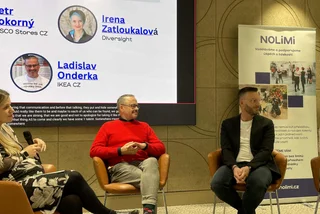Unemployment rose month-on-month in the Czech Republic but fell compared to last year, and is still the lowest throughout the European Union. Overall, the outlook for job seekers is favorable in most sectors except for unskilled labor.
The Czech Labor Office said unemployment reached 3.6 percent at the end of January 2022. This was a rise of 0.1 percentage points compared to December, but 0.7 percent less than in January 2021. As of Jan. 31, 2022, the Labor Office registered a total of 267,076 job seekers, which was 8,903 more than in the previous month but 41,783 fewer than last year.
The labor market situation in January was in line with long-term trends and typical development curves reflecting seasonal shifts in employment.
“Unemployment usually rises in January, and this year was no different. There has been a gradual decline in seasonal work, mainly in construction and agriculture. In connection with this, the number of people reporting to the Labor Office increased. There were also people whose fixed-term employment contracts and agreements expired at the end of last year. Some entrepreneurs also stopped their business,” Viktor Najmon, the general director of the Labor Office, said in a press release.
“Employers are still interested in taking on new employees, mostly in manufacturing, technical, and blue-collar occupations, but also in social services and health care,” Najmon said.
“In a year-on-year comparison, the labor market situation in January 2022 was more favorable. There was a decrease in the number of unemployed, while the number of vacancies increased year-on-year,” Najmon added.
January’s highest share of job seekers was in the Ústí nad Labem and Moravian-Silesian regions, at 5.3 percent, followed by the Karlovy Vary region at 4.3 percent. This is consistent with the long-term economic situation in these three regions. On the other hand, the lowest unemployment remains in the Pardubice region, at 2.6 percent. Prague had an unemployment rate of 2.7 percent.
Year on year, the situation has changed the most in the Karlovy Vary region, where the share of job seekers has fallen by 1.5 percent compared to January 2021, down to 4.3 percent.
In the districts, the differences are even more pronounced. The lowest unemployment rates at the end of the previous month were in Prague East, at 1.2 percent, Prague West, at 1.7 percent, and Pelhřimov and Benešov, both at 1.8 percent. On the other hand, the highest share of unemployed people was reported by the districts of Karviná, at 8.6 percent, followed by Bruntál, at 6.8 percent, and Most at 6.5 percent.
The gender gap among unemployed people closed slightly. Women accounted for 50.8 percent of the total number of registered job seekers. The share of unemployed men increased by 0.2 percentage points to 3.5 percent, while the share of unemployed women remained steady at 3.7 percent.
The average age of job seekers in January was 43.7 years, while last year it was 42.7 years. The age structure of job seekers has not changed significantly over the last five years. And even over the past 12 months there have been only slight changes: the share of unemployed people has fallen in the under-29 age group, while the share of unemployed in the 50-plus category has increased.
People with lower qualifications, especially those without a high school diploma and with only primary education, predominated among job seekers. By occupation, at the end of January, the largest number of workers registered with the Labor Office were auxiliary and unskilled workers.
The Czech Labor Office, as part of the Ministry of Labor and Social Affairs, uses a different methodology to calculate unemployment than the separate Czech Statistical Office (ČSÚ). The ČSÚ calculated unemployment in the Czech Republic in the fourth quarter of 2021 at 2.3 percent, a drop of 0.8 percent compared to the same month in 2020.












 Reading time: 3 minutes
Reading time: 3 minutes 
























